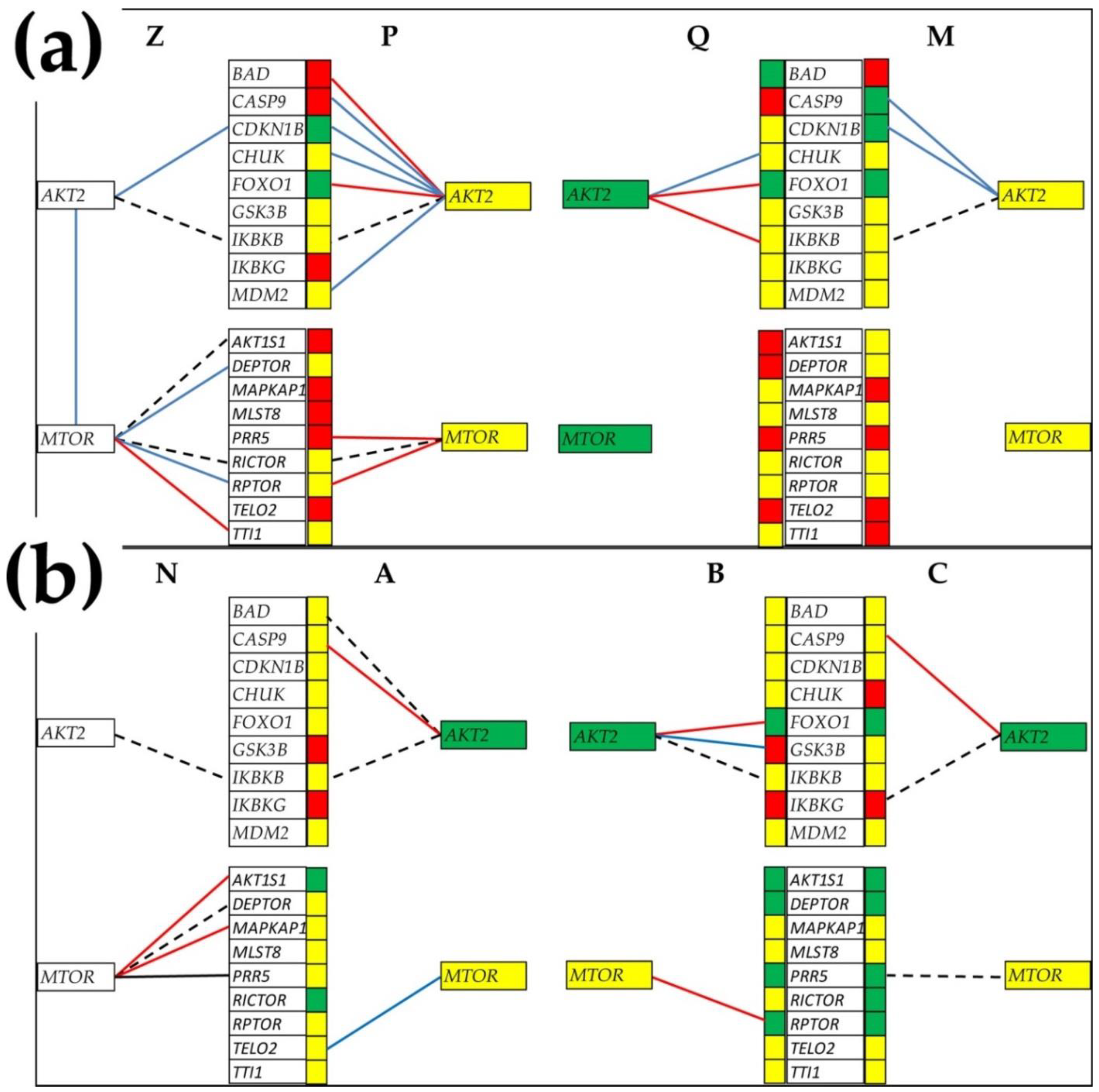Abstract
Many years and billions spent for research did not yet produce an effective answer to prostate cancer (PCa). Not only each human, but even each cancer nodule in the same tumor, has unique transcriptome topology. The differences go beyond the expression level to the expression control and networking of individual genes. The unrepeatable heterogeneous transcriptomic organization among men makes the quest for universal biomarkers and “fit-for-all” treatments unrealistic. We present a bioinformatics procedure to identify each patient’s unique triplet of PCa Gene Master Regulators (GMRs) and predict consequences of their experimental manipulation. The procedure is based on the Genomic Fabric Paradigm (GFP), which characterizes each individual gene by the independent expression level, expression variability and expression coordination with each other gene. GFP can identify the GMRs whose controlled alteration would selectively kill the cancer cells with little consequence on the normal tissue. The method was applied to microarray data on surgically removed prostates from two men with metastatic PCas (each with three distinct cancer nodules), and DU145 and LNCaP PCa cell lines. The applications verified that each PCa case is unique and predicted the consequences of the GMRs’ manipulation. The predictions are theoretical and need further experimental validation.
